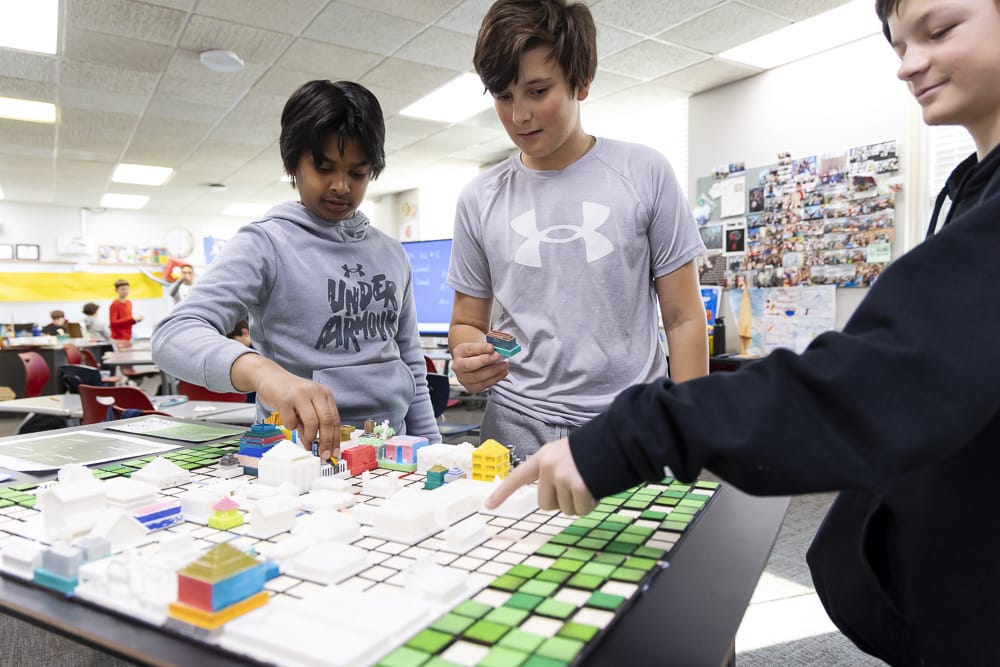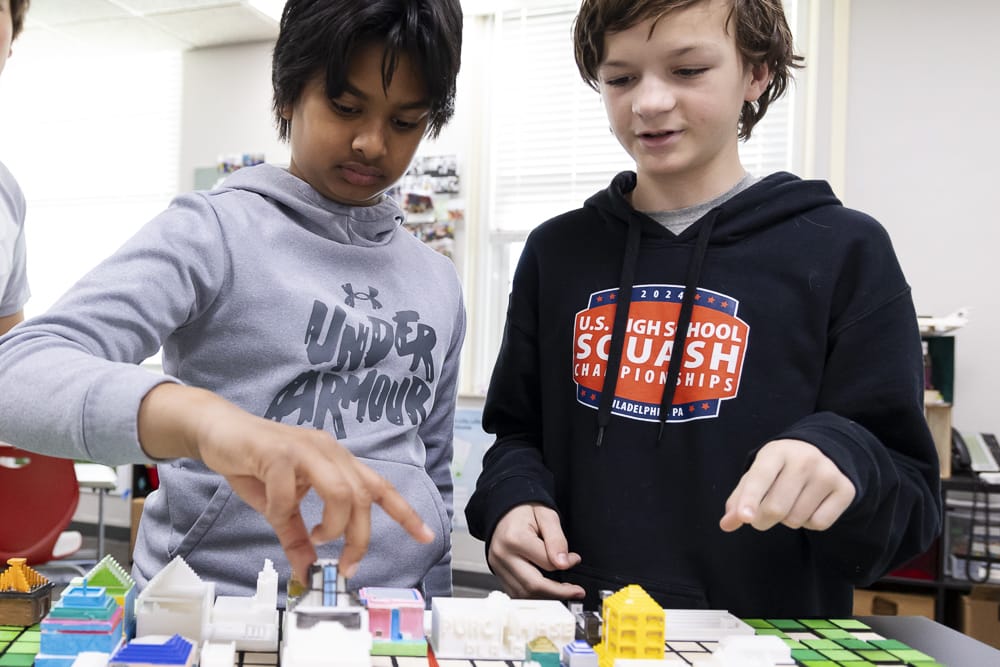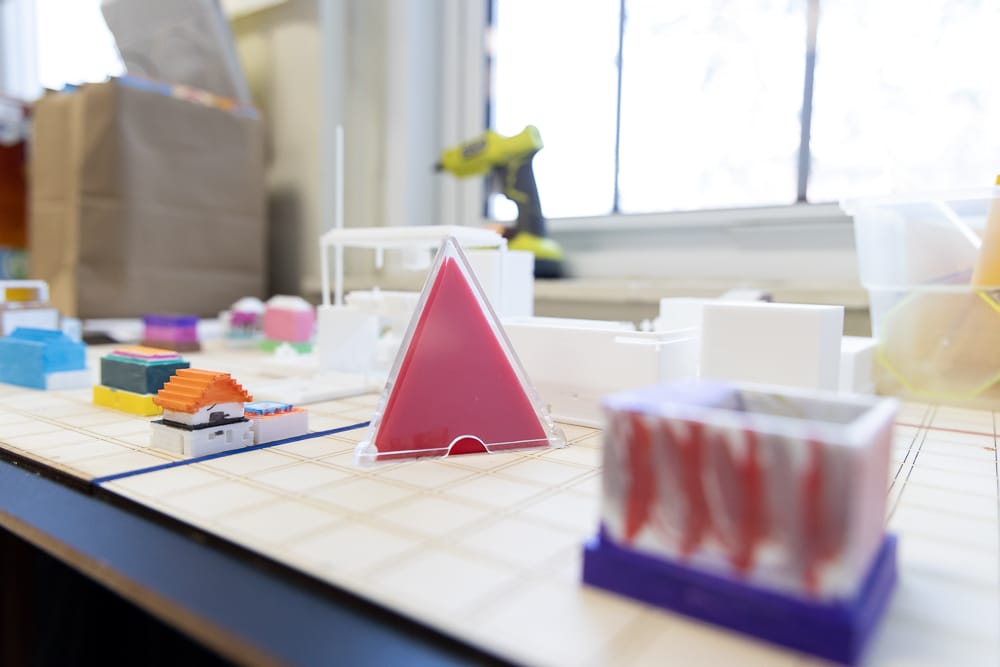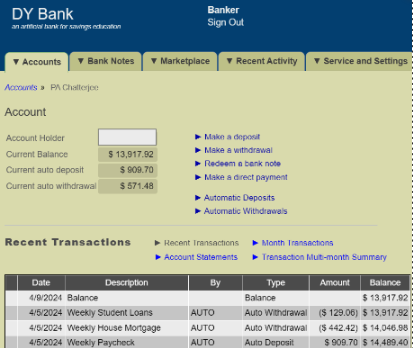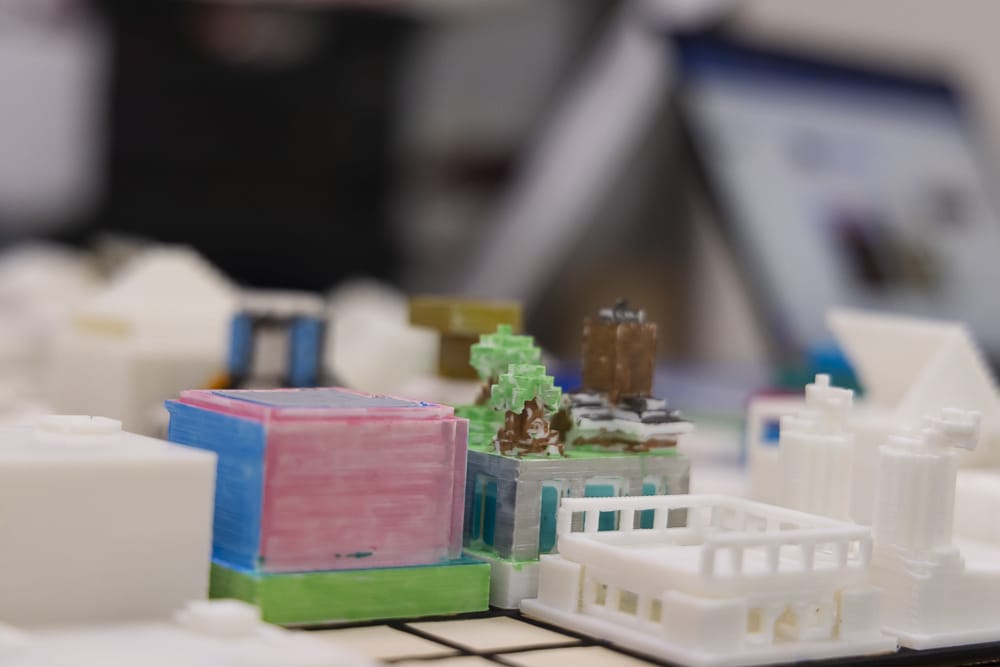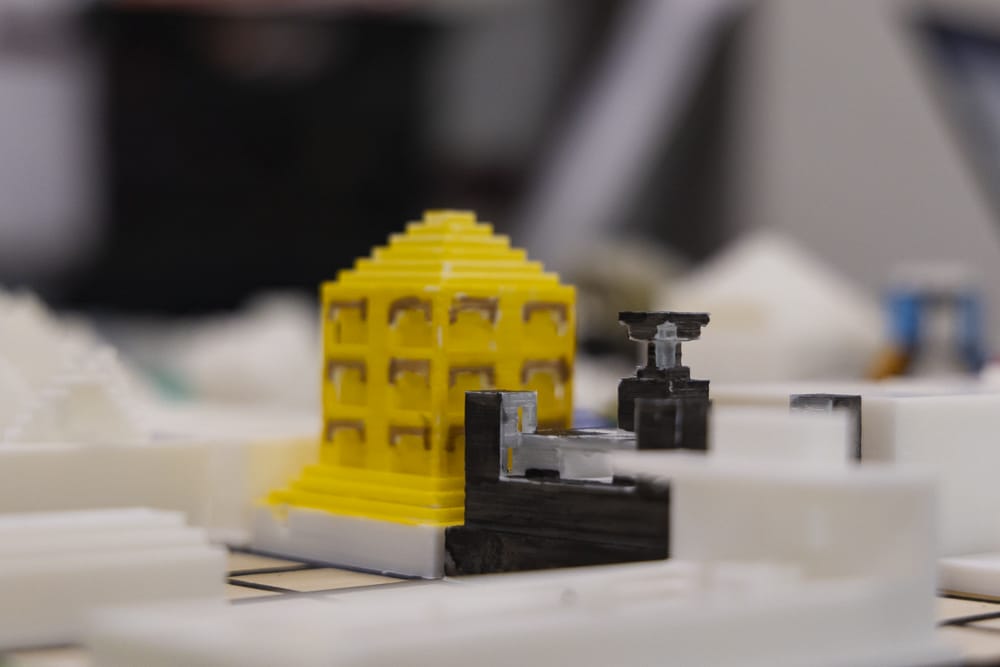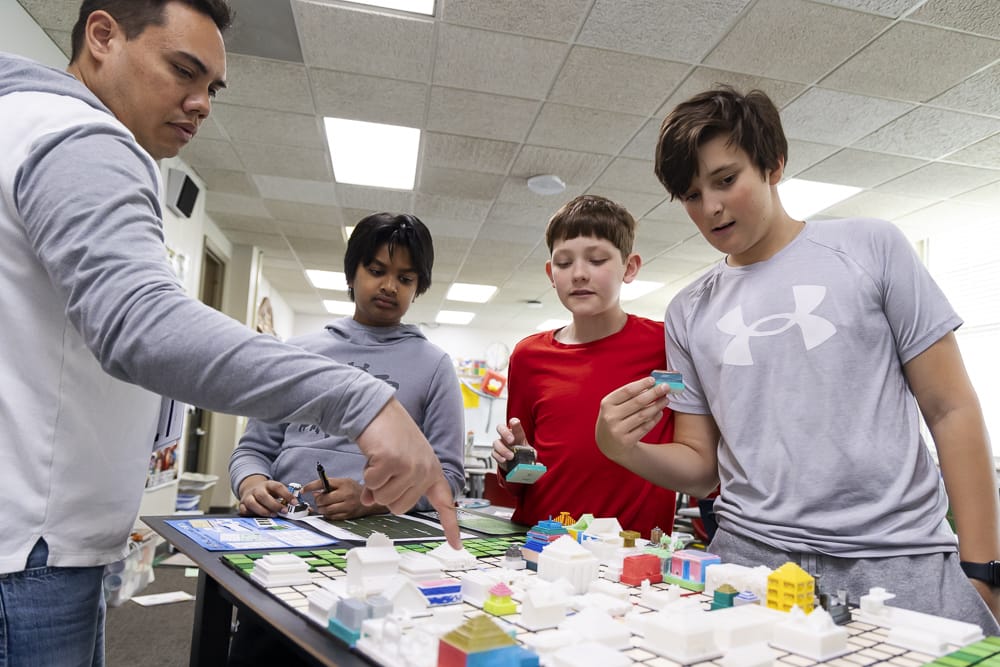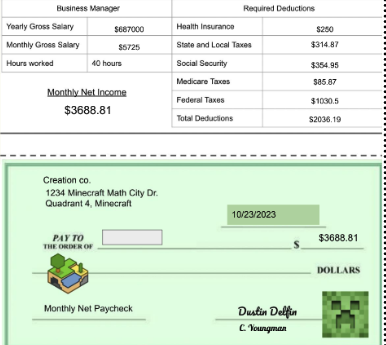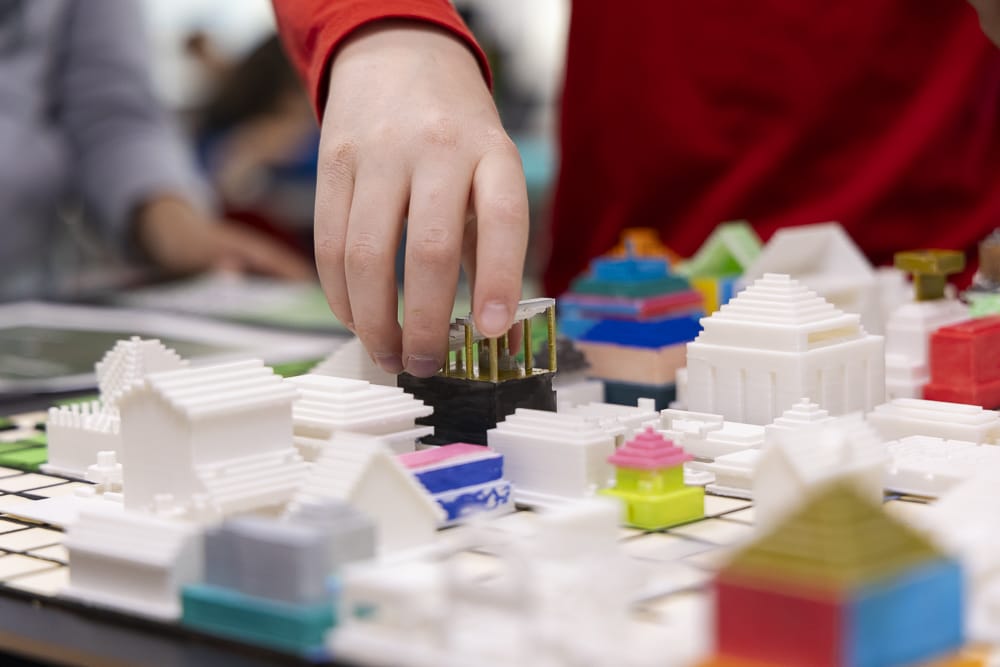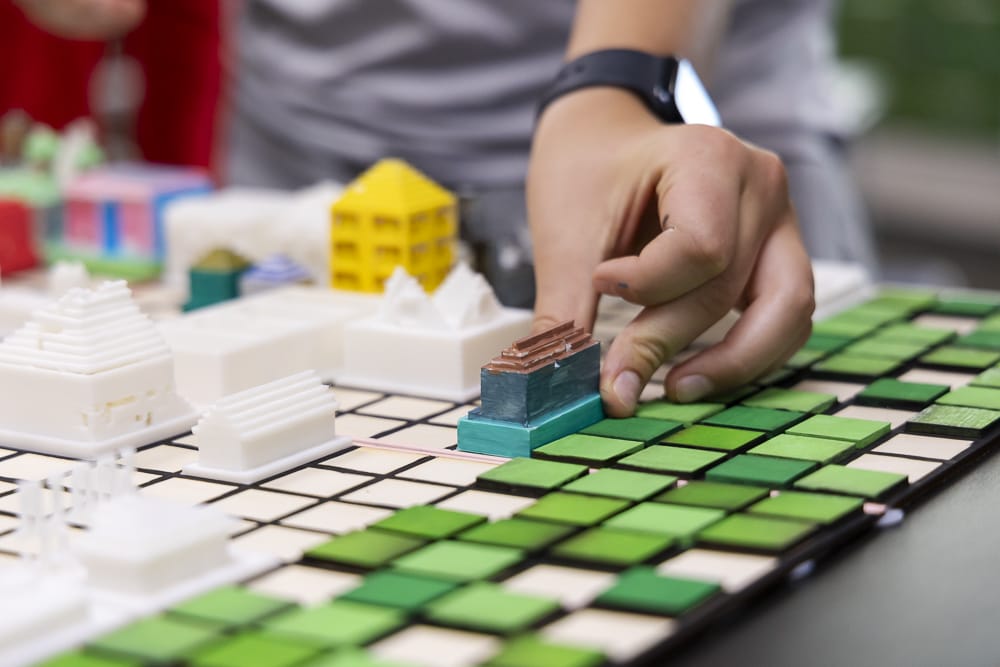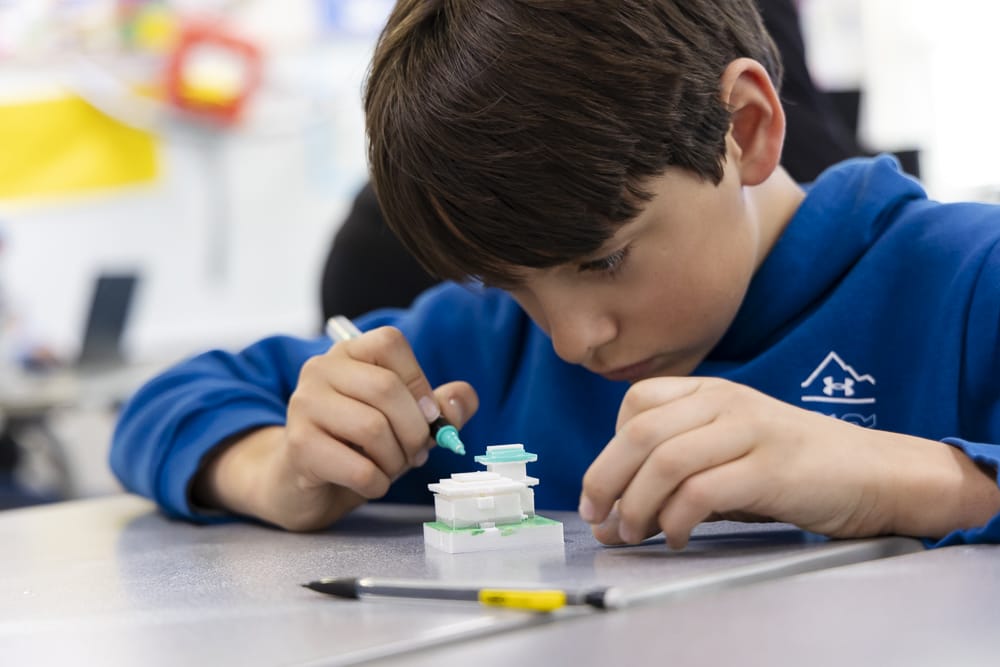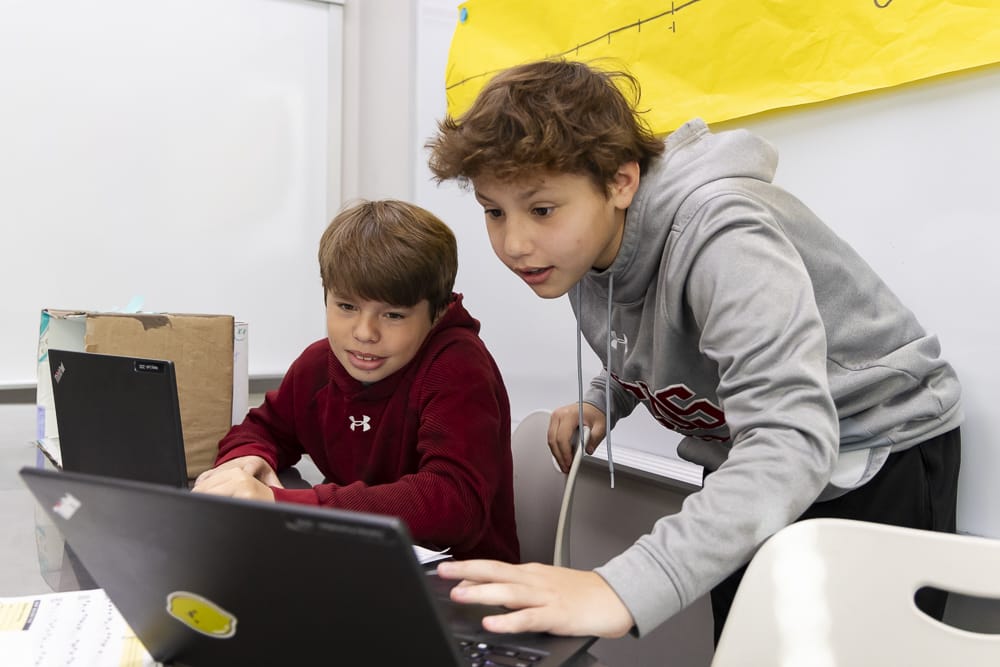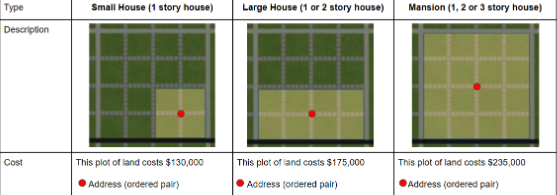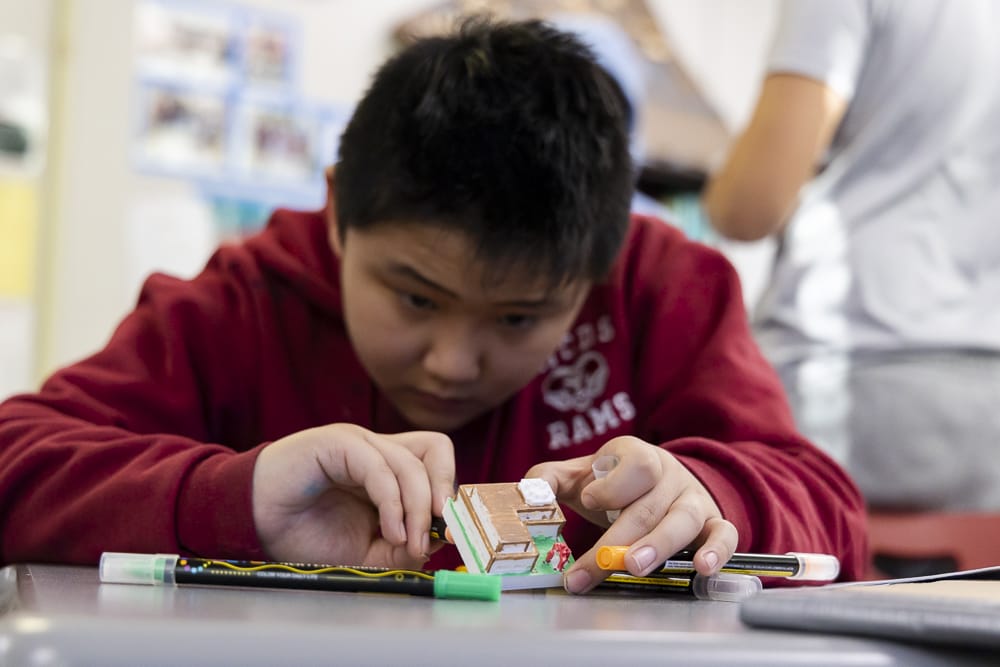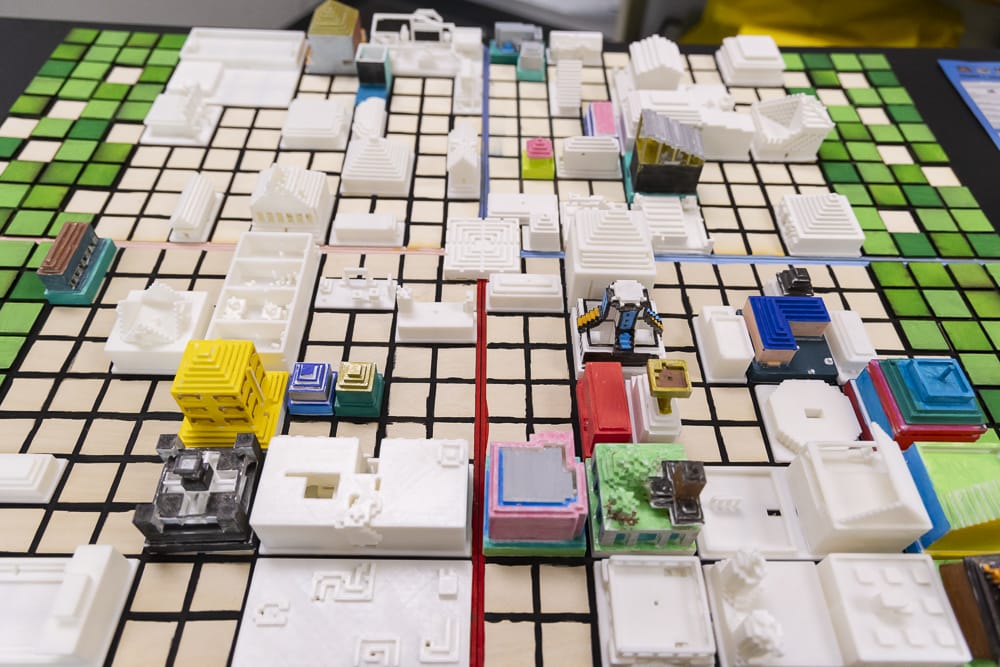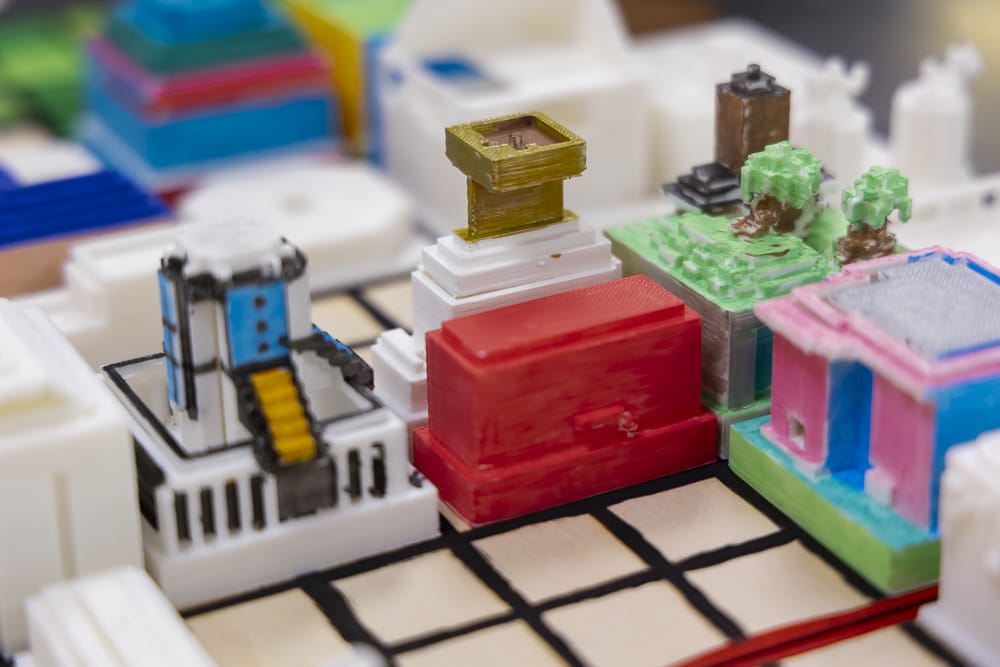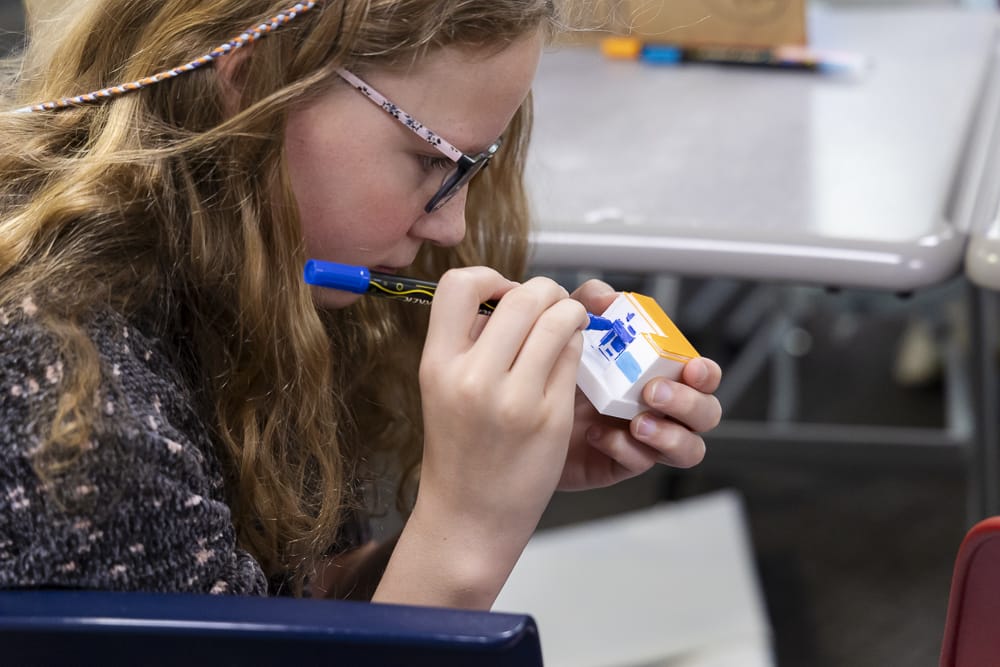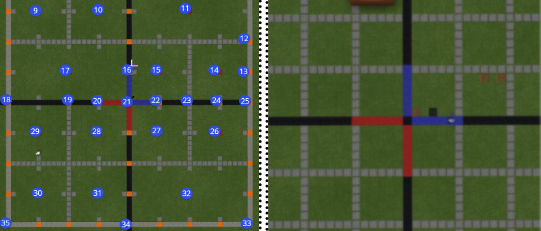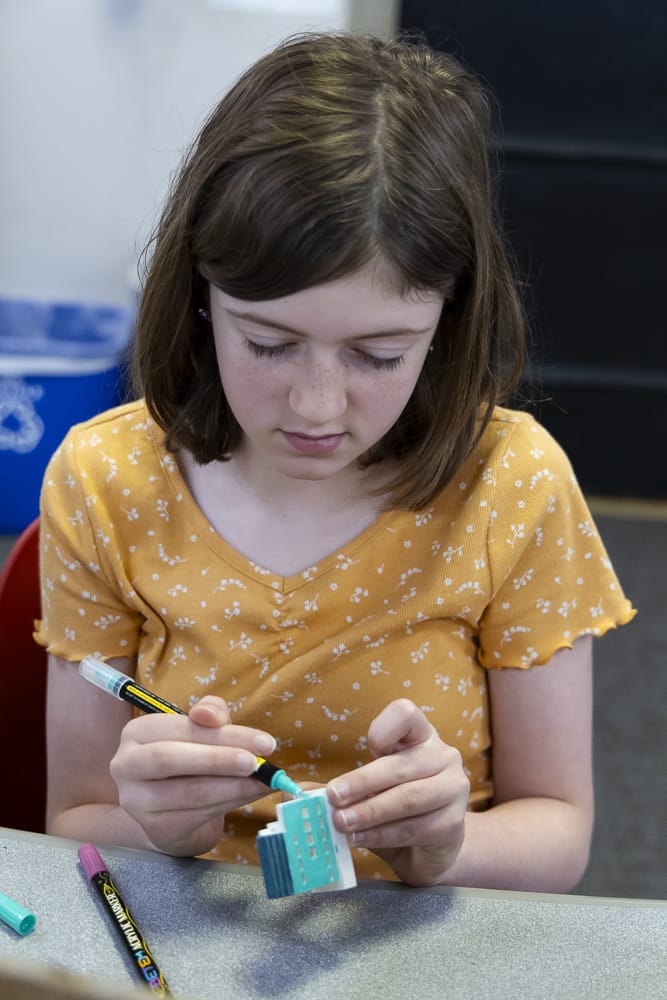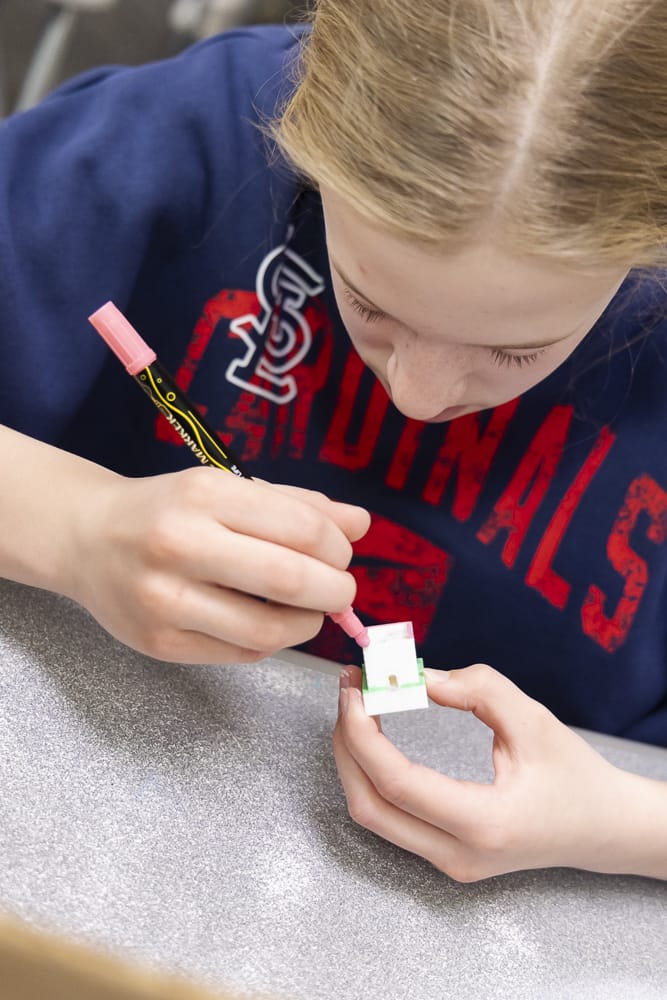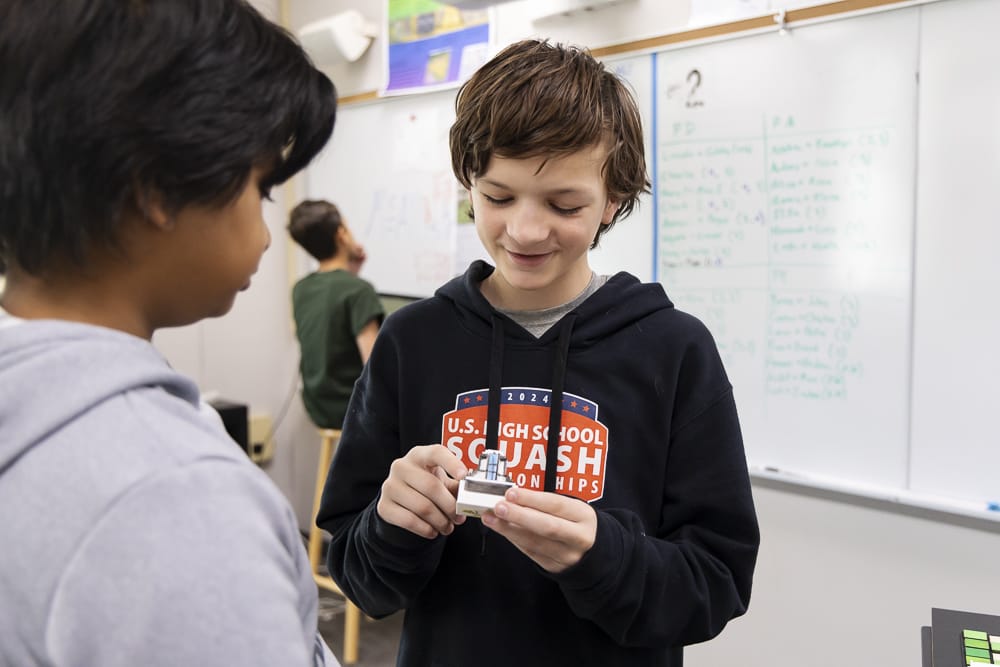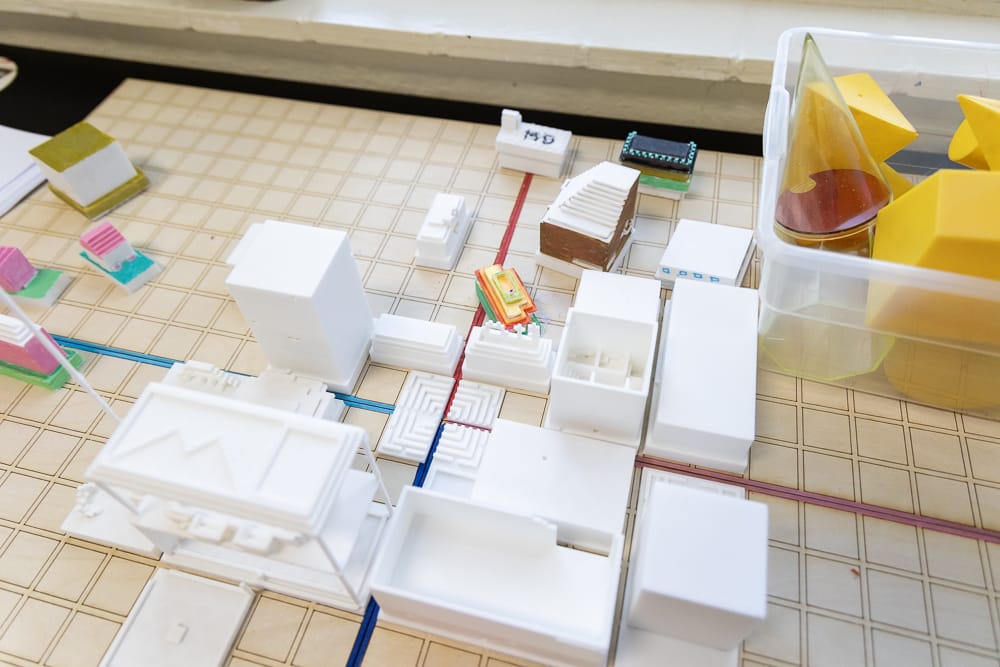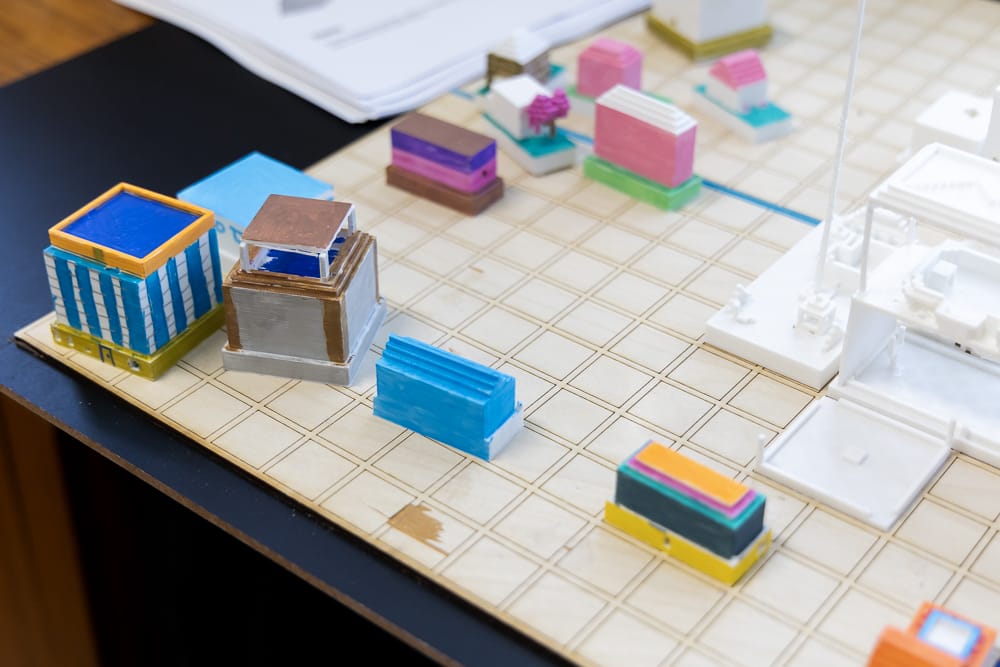By Dustin Delfin, Sixth Grade Math Teacher
At the beginning of the school year, sixth-grade math students created a fictional Math City to simulate their everyday lives. As we explored new concepts, students used those skills and applied them to real-world situations connected to our math city.
To start, students were given fictional bank accounts using MyKidsBank.org, allowing each to establish their own financial stake in Math City. Students can earn DY (Delfin/Youngman) Dollars by participating in class and through accurate formative assessment responses. This experience helps students understand movement on a number line, positive and negative rational numbers, and absolute value.
Similar to the game of life, students were asked to select the education they wanted for themselves (Associate, Bachelor, Master, or Doctoral degrees) and calculated the amount of their monthly student loan. They were then asked to select a career and computed their monthly net income by taking out taxes and other deductions.
Next, students purchased a property within the Minecraft Math City and calculated the monthly cost of their home (including interest and taxes) after taking out a 30-year mortgage. These financial tasks involved finding a percent of a number and using proportions to solve for the unknown values.
After working on these computations, students’ monthly bills are automatically deducted from their accounts while their monthly income is automatically deposited. From here, students are asked to monitor their finances.
Students began constructing their Math City in Minecraft at the midpoint of the year. The city is designed using the coordinate plane to guide its layout, creating properties of land that provide space for students to build their structures. The ordered pairs in this city represent the addresses of buildings and structures. Students worked together to build and design various buildings to contribute to their town. With the help of Middle School Science Teacher & Maker & Robotics Coordinator Branson Lawrence, their designs became reality using the 3D printer to build their Math City homes to spec. This allowed students to use their critical thinking and collaboration skills to solve problems, including zoning, area, perimeter, and volume.
Next, we are moving into our business project, which will take place in Math City using the money from students’ bank accounts.
When asked about the project, students shared exciting insights:
Julia Leonard ’30 said, “Something I enjoy about Math City is experiencing what it’s going to be like when we are grown up, like having to pay taxes and bills. We are also learning to spend our money wisely by choosing the house we can afford the most. I love that we get to use Minecraft to make our Math City, and it is so much fun to build our own houses and buildings!”
Connor Berkes ’26 liked the design process as well. He said, “I enjoyed being able to build very personalized designs for our homes. I found it challenging to build our houses in a limited amount of time. I’m looking forward to continuing to work on my business with my partner.”
Gemma Amini ’26 said, “During the Math City project, I learned a lot and had a lot of fun. In my opinion, the most challenging part was the building because I had no idea how to build in Minecraft World, but my friend helped me out, and I ended up building a really cool house and business. I thought the project was a perfect balance between having fun and using the things we learned to make the house and business in the Math City. The project was a great experience, I learned new math skills, and I had lots of fun building my house and business. I’m excited to do the next project!”
Fellow Sixth-Grade Math Teacher Cameron Youngman added, “Jumping back into sixth-grade math this year has been so much fun thanks to Mr. Delfin’s innovative teaching style. He does an amazing job finding ways to bridge students’ interests to our curriculum. My goal for this unit was two-fold:
- I wanted to learn how to use Minecraft (I had literally never opened it before!).
- I wanted students to find connections to their hobbies and interests and mathematics.
We focused on using Minecraft to teach students about the coordinate plane, area, perimeter, and writing algebraic expressions. It was amazing to see the students make connections when they weren’t even building on Minecraft. They often would take notes or work on assignments and express, ‘Ohhhh, this is why we had to count each unit of our house!’ It’s those ‘aha!’ moments that really validate what we do as educators. The truly fantastic work Mr. Delfin has done with the sixth-grade curriculum is bridging what we’ve done in Minecraft to having students create a Zillow page and even develop a whole business model, all while connecting math standards to each innovative project.”
